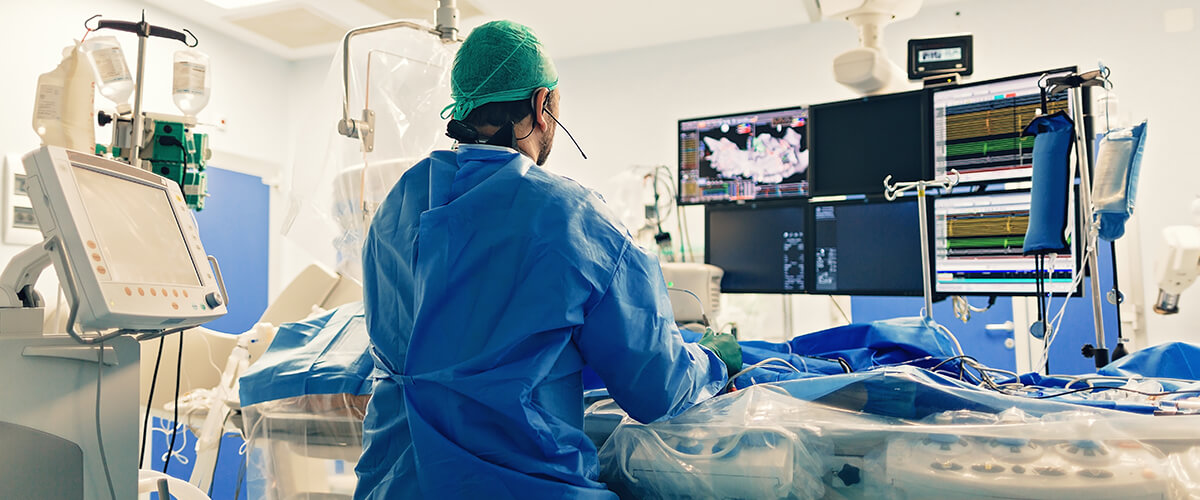Your heart is controlled by an electrical system that keeps your heartbeat regular and steady. Events like aging, high blood pressure, and heart attack can cause damage or scarring to your heart, which can create an irregular heartbeat, also called an arrythmia.
Your physician will send signals to your heart that will allow him or her to measure your heart’s electrical activity and find out what is causing the abnormal rhythm. The results will allow your physician to make decisions about whether medication will be helpful for you and if you are at risk for other cardiac problems, such as syncope (fainting), cardiac arrest or even sudden death.
Your physician will also learn if there is a single spot in your heart causing the arrhythmia that could be destroyed with a procedure called cardiac ablation. They may also decide if you would benefit from a pacemaker or implantable cardiac defibrillator (ICD).

WHAT TO EXPECT
Before the procedure, you will have an intravenous (IV) line started in a vein, usually in your hand or arm. This will be used to inject intravenous fluids and medications during your procedure. An anesthesiologist or nurse anesthetist will provide light sedation thru IV to help you relax as well as a local anesthetic at the surgical site as needed.
You will be prepped for a cardiac catheterization with one entry site, but instead of one catheter, your physician will use 3 to 5 special electrode catheters in one sheath. The catheters will be guided into the heart to record its electrical activity. You will be awake for the procedure, but you will probably be given a light sedative to relax you. You may feel your heartbeat skip or speed up, but you should not feel any pain.
Following the procedure, you will be taken to a recovery room, where you will rest for several hours before you are discharged.
